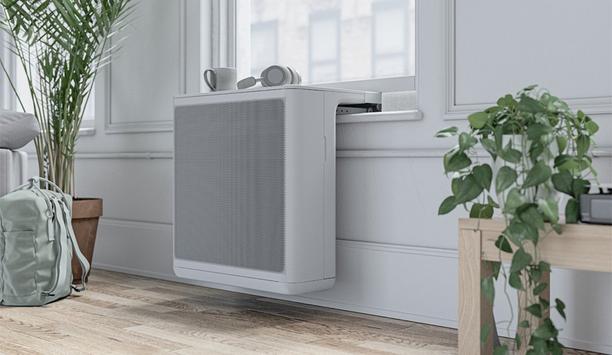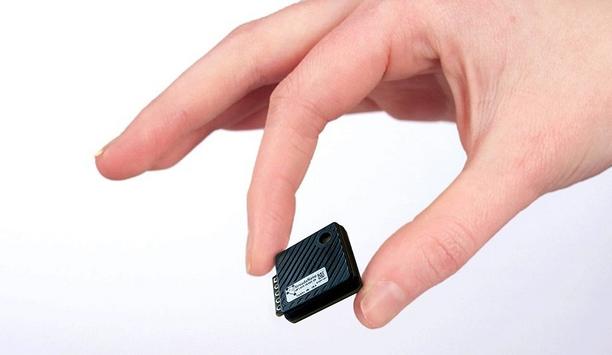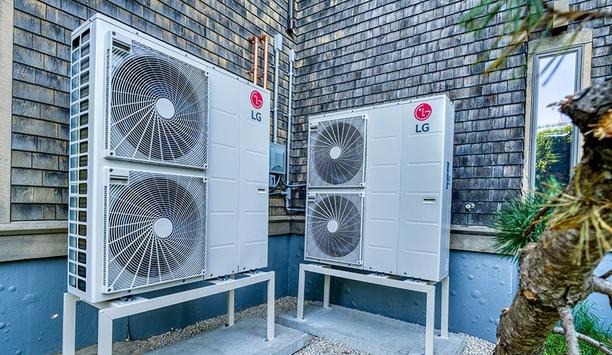HVAC Software - Editor's Note
California is moving to ban the sale of natural gas furnaces, heaters and water heaters by 2030. It is the first US state to make the move, in order to meet federal ozone standards. In addition to California’s previous efforts to eliminate installation of gas-fueled equipment in new buildings, the new regulation will address the use of gas space heaters and water heaters in existing residential buildings. When it comes time to replace them, building owners will be required to transition...
New tax credits and rebates are poised to infuse billions of dollars into the HVAC marketplace in the United States, making a variety of high-efficiency technologies more affordable for consumers and generating additional revenue in the HVAC market for years to come. clean energy investments A new law provides Americans with access to $370 billion for clean energy investments in the form of tax credits, incentives, and rebates to improve energy efficiency. There is also a tax deduction for own...
Certification is a way to demonstrate professional knowledge, a specific skillset, and the ability to do a particular job. In the HVAC market, earning certifications provides benefits to contractors as well as technicians. Paying for certifications Historically, typically 70% of technicians paid for their certifications. Now the numbers have flipped, and about 70% of contractors currently pay for certifications because they see the value-add they can provide to keep employees with an organizat...
High outdoor temperatures are a great indicator of demand for HVAC services, and HVAC companies are feeling the heat as they struggle to meet higher demand for services even as they face unprecedented supply-chain challenges and a critically tight labor market. HVAC contractors across the country agree that demand this summer is higher than ever. The phones are ringing off the hook, and HVAC employees are working long hours just to keep up. Some are working 12-hour days and on the weekend. The...
HVAC systems account for around 46% of the average U.S. home’s energy consumption. As big users of electricity, air conditioning (AC) systems this summer face continuing concerns about an adequate supply of electricity and the reliability of the U.S. electrical grid. According to a report from the North American Electric Reliability Corporation (NERC), large parts of the country are at either ‘high’ or ‘elevated’ risk of electricity shortfalls this summer. Notably,...
Demand for HVAC services spiked during the coronavirus (COVID-19) pandemic. Low interest rates, government stimulus checks and a greater emphasis on home improvement (because more people were spending time at home) drove new business for HVAC companies. However, labor shortages limited companies’ ability to meet the demand. In some cases, money was left on the table. There was another impact of the pandemic on industry labor trends: HVAC contractors kept working, even when much of the eco...
A $500 million grant program seeks to upgrade the infrastructure of U.S. schools, including improving HVAC systems. Many schools rely on outdated HVAC systems that make classrooms less comfortable and may pose health risks. The U.S. Department of Energy (DOE) is launching the grant program to lower energy costs, improve air quality and prioritize schools most in need. Addressing school infrastructure needs An influx of federal money to help schools update their HVAC systems is an opportunity...
Some 38% of greenhouse gas emissions emanate from residential housing, specifically heating and cooling systems. Given the goal of ‘net-zero’ carbon emissions by 2050, new approaches have emerged to achieve that target. Some of the solutions currently being evaluated include the use of hydrogen as a replacement fuel, to store electricity from solar or wind power, or in fuel cells that use an electrochemical process combining hydrogen and oxygen to produce electrical energy and water....
Gradient seeks to bring the benefits of mini-split systems - variable speed drive, efficient operation, heat pump heating - to a wider audience, by simplifying the installation process. Gradient offers a design that is installed in a window, but it has more similarities to mini-split systems than to a window air conditioner. simple installation The system is designed for simple installation by a layman – it generally takes about 15 minutes. Using heat pump technology, Gradient has the e...
Climatech of Professional Air in Pensacola, Florida, USA, is known for putting HVAC customers first by providing first-class service and for doing what’s right, even when no one is looking. “We approach each customer like it’s our grandmother,” said Travis Thompson of Climatech of Professional Air, adding “We show all the options and we are fair with pricing. The open-book approach to options and our honest opinion is the best way. We sit and get to know the custome...
‘As a service’ is a familiar pattern in business today, especially in the technology arena. ‘Software as a Service’ is as common as Microsoft Office 365 and companies have been providing services, such as telephony and internet access for decades. But, how can the model be applied to the HVAC market? It’s not a common approach today, but the benefits of applying ‘As a service’ to HVAC are many – for customers and for equipment and service provider...
The story of Bluon is the tale of how a chemical company blended a new refrigerant, and then later evolved into a large, brand-agnostic online community that helps technicians do their job. Currently, Bluon is on the verge of monetizing its platform, linking e-commerce into its vast wellspring of technical information to guide HVAC installers. Tdx 20 refrigerant blend Bluon created and received EPA approval for its Tdx 20 refrigerant blend (R-458A) to replace R-22 and provide 20% great...
With a required 15% increase in seasonal efficiency looming in 2023, original equipment manufacturers (OEMs) are being challenged to design HVAC rooftop units (RTUs) that both meet the immediate efficiency requirements and also set the stage for a refrigerant transition in 2025 and beyond. Meeting the challenges requires that new hardware designs be more than ‘a little bit better’; rather, complete shifts in technology are called for. Insights on the changing technologies and regulat...
For 100 years, the Marley brand has provided evaporative cooling towers and fluid coolers, ranging from large industrial applications to smaller plants such as offices. The equipment is used to cool hospitals, data centers, and large commercial buildings. In data centers, for example, evaporative cooling uses 60% less power than air-cooled systems. Events at 100th anniversary SPX Technologies, the corporate owner of the Marley brand, is celebrating its 100th anniversary in 2022. Among th...
Rooftop units (RTUs) withstand a lion’s share of the burden, when it comes to heating and cooling commercial buildings, and they also represent a big portion of a building’s impact on global warming. Traditional low-tech approaches to controlling RTUs have failed to address global warming concerns, and these units, operating independently, may not even deliver sufficiently on the climate demands of a building. Intelligent approach to managing energy demand Providing an intelligent...
AHR Expo was back in a big way for 2022, reflecting a dynamic industry that not only survived the pandemic but has found new ways to thrive. Technical developments on display in Las Vegas spanned traditional product categories, which continued to display new levels of innovation in a mature market. Also reflecting progress were new digital offerings that increase control and efficiency of HVAC products and link them to the expanding world of data. Omar Tabba, the Chief Product Officer at...
A new installation is using natural heat from groundwater to regulate the indoor climate of The Glen Mhor Hotel in Scotland. The groundwater is further heated by two electric heat pumps and distributed to guest rooms and apartments through a small heating district network. From the system, which is slated for completion this spring, the water will return to the sand and gravel layers in shallow ground around Inverness, and eventually back to the River Ness. The design, which replaces 20 gas-fir...
The HVAC market is moving fast. Supply shortages, technology trends and regulatory issues all converged and had a profound impact on the industry in 2021, even as the lingering impact of the COVID-19 pandemic also made a mark. Looking back at the top articles of the year at HVACInformed.com, as measured by those that received the most ‘clicks’ on the website, provides a decent summary of how the industry evolved in 2021. Top 10 articles posted at HVACInformed.com in 2021 Timely and...
Veterans make good job candidates. Military experience comes with a heightened work ethic and sense of responsibility. Many veterans have experience working outdoors and with their hands. They are used to being team members. Coming out of the military, however, veterans may find themselves at a loss for a career path. HVAC may be the answer. “Veterans are used to getting up early, being on time, wearing a uniform, and they are dedicated and committed,” says Marvin Key, CEO and Co-F...
HVAC systems typically operate on a schedule. Heating, cooling and ventilation systems start and stop at fixed times of the day, scheduled around when and how a building is used. But, shouldn’t the number of occupants in a building or a room have an impact on how the HVAC system operates? Considering occupancy, when addressing HVAC needs, is an especially timely approach, given that building schedules are less predictable now, since the COVID-19 pandemic changed work patterns, possibly fo...
Society is prioritizing the mitigation of climate change, and new, potentially flammable, low-Global Warming Potential (GWP) refrigerants are a key tool in broadly lowering the rate of global warming. The detection of fugitive (leaking) refrigerant is a new regulation emerging as HVAC equipment manufacturers convert to low-GWP refrigerants. Both A2L and A3 low-GWP refrigerants, while climate-friendly, are flammable. As such, OEMs will have to integrate refrigerant sensors that detect leaked ref...
The concept of district heating refers to a group of customers, or even a whole city, which shares a system providing ambient heat, often using steam or water heated by sources that emit less carbon dioxide. A network of insulated pipes, constructed underground in a community, transports the heat among customers, and various meters and billing systems keep up with how much heat is provided. District heating District heating is seen as an increasingly important option, as municipalities seek to...
A focus of research and development in the HVAC arena has been to develop alternative materials and technologies that requires less energy to function while still providing a benefit to regulate temperature. More passive approaches to regulating temperature offer green benefits and yield new components in systems to regulate temperatures in the future. Here are some examples and a glimpse of what’s to come. Phase-change materials have drawn interest because of their ability to change the...
‘Net zero’ is an unavoidable reality in the continuing fight against climate change. For example, both the United Kingdom and the European Union have set targets of having net-zero greenhouse gas emissions by 2050. These objectives are in line with a commitment to global climate action under the Paris Agreement. Net zero - carbon neutral Net zero refers to the balance between the amount of greenhouse gas produced and the amount removed from the atmosphere. It’s another term f...
High school seniors and their parents weigh multiple factors, when choosing a college or university. In the aftermath of the COVID-19 pandemic, the importance of one factor has shown a marked increase. Indoor air quality (IAQ) is now among the top-three aspects that an applicant and their parents would consider, when choosing a college, according to one survey. Growing awareness of IAQ Growing awareness of IAQ presents an opportunity, as the HVAC industry seeks to serve the higher education ma...
Many new buildings are constructed to maximize the efficiency of HVAC systems and to minimize their environmental impact. But what about older buildings? How can they work to achieve efficiency and environmental goals? One answer involves the use of artificial intelligence (AI). “There are a lot of older buildings, and existing buildings are rarely demolished,” says Jean-Simon Venne, Co-Founder and Chief Technology Officer of Brainbox AI. “There are so many of them and t...
When COVID-19 hit, North Arkansas College had to close its school, and students had to transition from in-person to online learning, which is especially difficult when teaching a trade that is heavily dependent on hands-on training. The HVAC/R program at North Arkansas College, which has existed for over 50 years, typically has an average of 14 to 16 students enrolled each year. HVAC/R program “With the quick transition we had to think outside the box, and so we found a company that had...
Interfacing with HVAC products is increasingly complex. The tiny 1-inch LCD display included on systems does not lend itself to complicated functions. Keeping the HVAC user interface simple limits control options to on/off, mode change or choosing a temperature. Thermostat controls company COTHERM has developed a smartphone app that can be used to control complex functions such as product settings during installation, programming or providing technical information about an HVAC product. Near f...
The COVID-19 pandemic has changed the way the world lives, escalating the need to prioritize health and safety where we live, work, learn and play. As organizations around the world respond to the pandemic, the International WELL Building Institute (IWBI) has leveraged its expertise to help. Impact of building surroundings IWBI is a public benefit corporation focused on deploying “people-first places” to advance a global culture of health. The community has adopted the WELL Buildin...
It’s shaping up to be a long, hot summer for HVAC contractors and their customers. Disruptions in the nationwide supply chain that began during the COVID-19 pandemic still have not been resolved. Shutdowns last summer played havoc with the supply of parts, and suppliers are still playing catch up, as raw materials remain scarce. Furthermore, prices are going up among some components and key raw materials. Waiting times for parts can run into weeks or even months. Supply shortages of HVAC...
Leveraging Radiant And Hydronics To Help Achieve Decarbonization Goals
DownloadSealed Connectors In Harsh Environments
DownloadPowering And Cooling Next Generation Data Centers
DownloadDebunking Myths To Promote A Bright Future For Heat Pumps
DownloadOptimizing Comfort: The Ultimate HVAC Component Guide
Download

































